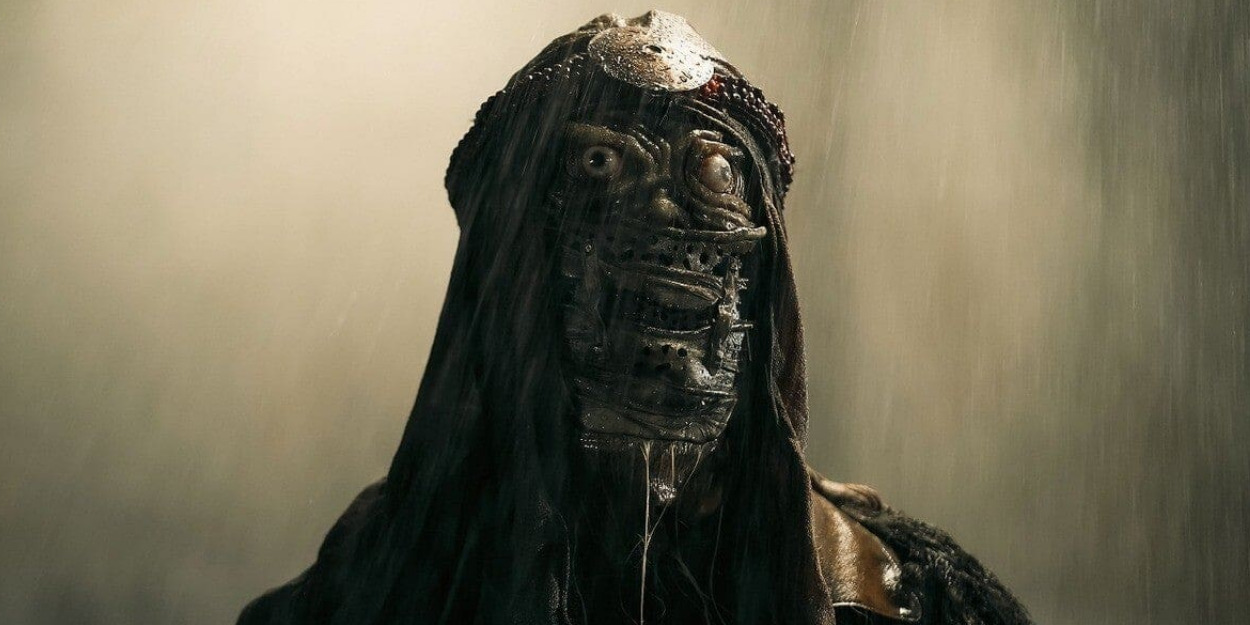Takashi Miike’s Japanese crime horror film, ‘Lumberjack the Monster,’ brings a unique tale that centers on the relationship between serial killings and psychopathy. The film revolves around Akira Ninomiya, a cutthroat lawyer who sports psychopathic tendencies. Amidst a series of seemingly disconnected murders, Akira finds himself targeted by the elusive “Brain Theif” serial killer. However, once attacked by the killer— dressed as a famous kids’ picture book protagonist, Lumberjack the Monster— the lawyer manages to escape the situation with his life intact. Consequently, a revenge-fueled cat-and-mouse game ignites between the two, leading Akira back to his own past.
The story assigns significant weight to the masked serial killer as different characters, from Akira to the Police profiler, Arashiko Toshiro, dedicate themselves to uncovering the killer’s identity and motives. Therefore, the killer’s peculiarly distinct MO may lead viewers to speculate about their connections to reality. SPOILERS AHEAD!
Lumberjack The Monster: Mayusuke Kurai’s Fictitious Character
The titular serial killer in ‘Lumberjack The Monster’ originally has a basis in Mayusuke Kurai’s eponymous 2019 novel, which provides the source material for Director Miike’s film. Screenwriter Hiroyoshi Koiwai helmed the screenplay for the book-to-movie adaptation, maintaining close canonical authenticity to Kurai’s work. As such, the film’s Lumberjack killer, better known as “Brain Theif” and later revealed to be Takeshi, is an original character created by the author, whom Miike and Koiwai brought to life on the big screen. Thus, only retaining roots in Kurai’s crime fiction novel, the Lumberjack serial killer stays confined to a fictional world without any real-life basis.

Instead, the Lumberjack flips the script on the traditional cultural perception of serial killers by presenting a fascinating case where the killer only targets psychopaths who have wronged someone in their lives. Therefore, the narrative takes an intriguing perspective as it follows psychopath Akira Ninomiya, who has been a perpetrator of violence in the past but now finds himself as a victim of a targeted attack. Simultaneously, through a gorey MO of stealing the brains out of his victim’s heads, the killer showcases signs of a troubled past himself. The same results in a riveting dynamic that opens up space for a psychological exploration of psychopathy in relation to immorality.
Although immorality or homicidal tendencies aren’t inherently psychopathic traits, studies have shown a correlation between the two. As per reports, a 2002 study about psychopathy and homicide conducted by Woodworth and Porter concluded that 27% of individuals who committed homicide qualified as psychopaths. Similarly, psychopathic criminal individuals far outweighed their counterparts in the likelihood of carrying out planned violence. Furthermore, the cultural depiction of psychopathy in mainstream media or the prevalence of the disorder among known serial killers such as Ted Bundy and Jeffrey Dahmer adds to the broad understanding of these concepts.
Therefore, the film’s employment of the central serial killer, Lumberjack, as an agent who is killing psychopaths as a punishment for their crimes offers a unique voice to the conversation. The Lumberjack, or Takeshi’s past— wherein his abductors implanted a neuro chip in his brain to block out his empathy center, the anterior insular cortex— cements him as an unconventional character whose narrative oscillates between degrees of morality. Consequently, his traits, experiences, and narrative provide fertile ground for the analysis of realistic understandings of psychopathy paired with fictional hypothetical situations.
The character also cements himself into reality by grounding himself in a number of statistics. For instance, according to World Atlas, Japan remains fourth in the list of countries with the most reports of serial killers. Likewise, there are recorded studies that claim victims of childhood abuse retain an increased risk of developing personality disorders, like anti-social behavior, which can lead to criminal connections in adulthood. Thus, Takeshi’s unresolved childhood trauma— evident in his choice to don a Lumberjack The Monster— fuels his eventual serial killings as his guilt compels him to track others with a similar past to him and end their lives in a convoluted action of self-flagellation. As a result, despite lacking a basis in reality, the film’s Lumberjack killer manages to hold ties to realistic perceptions of serial killers.
Read More: Best Serial Killer Movies on Netflix


You must be logged in to post a comment.